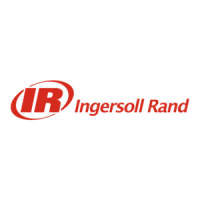
Do you have a question about the Ingersoll-Rand Thermo King V-520 Series and is the answer not in the manual?
| Brand | Ingersoll-Rand |
|---|---|
| Model | Thermo King V-520 Series |
| Category | Air Compressor |
| Language | English |
General safety guidelines for operating and maintaining units.
Precautions regarding automatic unit startup and operation.
Information on handling refrigerants and environmental concerns.
Immediate actions for refrigerant exposure incidents (eyes, skin, inhalation).
Precautions for handling synthetic or polyol ester refrigerant oil.
First aid for eyes, skin, inhalation, and ingestion of refrigerant oil.
Warnings and procedures related to electrical safety.
Precautions to prevent electrostatic discharge when servicing microprocessors.
Procedures to prevent damage to electronic circuits during welding.
Safety precautions and first aid for high voltage electrical hazards.
Specific safety measures to take when working with high voltage.
Immediate medical assistance and steps to take after electrical shock.
Hazards associated with low voltage circuits and handling them.
Warnings and guidelines for safe battery installation and cable management.
Details on fuses, condenser fan motors, and evaporator fan motors.
Specifications for condenser fan motors including voltage, RPM, and current.
Specifications for evaporator fan motors including voltage, RPM, and current.
Electrical specifications for various solenoid coils.
Electrical specifications for the liquid injection valve solenoid coil.
Electrical specifications for drain heaters in MAX units.
Details on refrigerant charge, termination switches, and pressure cutouts.
Specific refrigerant system parameters for V-520 models.
Specific refrigerant system parameters for V-520 Max models.
Temperature settings for defrost termination.
Temperature settings for the liquid injection switch.
Pressure settings for the low pressure cutout switch.
Pressure settings for the CPR valve on specific models.
Pressure settings for the SPR valve on specific models.
Reference to setup procedure for the Suction Bypass CPR Valve.
Details on main and electric standby compressors, and oil capacity.
Type and configuration of the main compressor.
Type of electric standby compressor for specific models.
Oil capacity for different unit models.
Specifies the required compressor oil.
Indicates the method used for defrosting.
Details on defrost initiation and termination intervals.
Information on belt tension adjustment using a specific tool.
Electrical specifications for AC semi-hermetic compressors.
Power requirements for electric standby operation.
Electrical specifications for electric heaters.
Recommended solder types and joint clearances for refrigeration and hot water components.
Solder specifications for copper to copper/brass and dissimilar metal connections.
Solder specifications for hot water tubing connections.
Overview of V-520 and V-520 MAX units, their design, and application.
List of standard features included in the units.
List of optional features available for the units.
Description of the condenser mounting design.
Description of the evaporator location.
Details on refrigeration hoses, electric compressors, and system protection.
Information on control circuit voltage and power sources.
Overview of the Electronic Control Module and In-Cab Control Box.
Functionality of the In-Cab Control Box keypad.
Explanation of the unit's total operating hours meter.
Explanation of the on-road compressor operating hours meter.
Explanation of the electric standby compressor operating hours meter.
Function of the low battery voltage alarm.
Conditions that activate the unit's buzzer.
How the unit can be operated without the In-Cab Control Box.
Options for initiating defrost cycles.
On-screen notification for required maintenance.
On-screen reading of load compartment temperature.
On-screen display of setpoint temperatures.
On-screen warning for electric power supply connection.
Function and benefits of the oil separator.
Lists refrigerants used in different V-520 unit models.
How the liquid injection system limits compressor discharge temperature.
Function of heaters to prevent drain tube blockage in R-404A units.
How the unit operates when connected to an electric power source.
Details on high pressure transducer and low pressure cutout switch.
Function and pressure cut-in/cut-out points of the HPT.
Function and pressure cut-in/cut-out points of the LPCO.
Information about the control box components.
Identification of Thermo King Printed Circuit Boards.
How connector codes are stamped on the PC board.
Components and function of the ECM and its interaction with the In-Cab Control Box.
How standard and heat-option models operate in different modes.
Requirements for unit operation and electric standby mode.
How cooling mode functions for standard and multi-temp units.
Operation details for Cool Mode in specific models.
Additional components and operation for Model 30 and 50 units.
How the unit operates in Null mode.
Operation in Heat Mode for specific models.
Operation in Purge Mode for specific models.
Operation in Heat Mode for specific models.
How defrost is initiated, continues, and terminates.
Defrost operation for Model 10 and 20 units.
Defrost operation for Model 30 and 50 units.
Where to find serial number nameplates on the unit.
Identification of major unit components with a diagram.
Warning about operating unit without understanding controls.
Function of the In-Cab Control Box display.
Function of the On/Off key for starting/stopping the unit.
Function of the Select key to navigate screens.
Function of the Up key to increase setpoint temperature.
Function of the Down key to reduce setpoint temperature.
Function of the Enter key for commands like manual defrost.
Conditions that activate the unit's buzzer.
Symbol indicating the unit is cooling.
Symbol indicating the unit is heating.
Indicates temperature units (Celsius or Fahrenheit).
Indicates an alarm condition in the system.
Procedures for starting the unit in engine operation and electric standby.
Steps to start the unit using engine power.
Steps to start the unit using electric standby power.
What the standard display shows after the unit starts.
Examples of single-temperature unit displays.
Examples of multi-temperature unit displays.
How to change the setpoint temperature.
Steps to set temperature for single-temp units.
Steps to set temperatures for multi-temp units (Main and Remote).
Procedure to set temperature for the main compartment.
Procedure to set temperature for the remote compartment.
Steps to manually initiate a defrost cycle.
How the unit indicates and handles alarms.
Alarm condition where the unit stops and requires manual restart.
Alarm condition where the unit restarts automatically after an issue is resolved.
How to view and clear current alarm codes.
Conditions that activate the unit's buzzer.
List of alarm codes and their descriptions.
How to navigate through different information screens.
Options available in the main menu.
Options available in the hourmeter menu.
Checks to perform after starting the unit.
How to adjust the thermostat for testing.
Procedure for pre-cooling the truck interior before loading.
How to initiate a defrost cycle after pre-cooling.
Steps for loading product into the compartment.
Steps to take after loading is complete.
Checklist for weekly pre-trip inspections.
Tasks to perform during weekly post-trip checks.
Maintenance checks for electrical components.
Maintenance checks for refrigeration and heating systems.
Maintenance checks for structural components.
Schedule for electrical maintenance procedures.
Reference to manual for electronic control system service.
How defrost is initiated and terminated.
Details on the liquid injection switch and solenoid valve.
Step-by-step procedure for testing the LIS and metering orifice.
Information on condenser fan motor maintenance and troubleshooting.
Procedures for removing and installing condenser fan motors.
Information on evaporator fan motor maintenance and troubleshooting.
Procedures for removing and installing evaporator fan motors.
Troubleshooting procedure for electric standby mode issues.
Detailed steps for troubleshooting electric standby circuit issues.
Schedule for refrigeration maintenance procedures.
Procedures for evacuating and charging the refrigeration system.
Important notes and required tools for evacuation and charging.
Required positions for solenoid valves during evacuation.
Step-by-step guide for evacuating and charging the system.
Detailed steps for the evacuation and charging process.
How to check the refrigerant charge level.
Procedure to test refrigerant charge without a load.
Procedure to test refrigerant charge with a load.
How to check the compressor oil charge.
General checks for the refrigeration system.
Procedure for cleaning small truck units.
Steps for performing a clean-up procedure on the system.
Steps to return the unit to operation after service.
Procedures for removing and installing the engine driven compressor.
Steps to remove the engine driven compressor.
Steps to install the engine driven compressor.
Procedures for removing and installing the electric compressor.
Steps to remove the electric compressor.
Steps to install the electric compressor.
Procedures for removing and installing the condenser coil.
Steps to remove the condenser coil.
Steps to install the condenser coil.
Procedures for removing and installing the drier.
Steps to remove the drier.
Steps to install the drier.
Procedures for removing and installing the high pressure transducer.
Steps to remove the high pressure transducer.
Steps to install the high pressure transducer.
Procedure for testing the defrost solenoid.
Reference to testing the liquid injection solenoid valve.
Procedure for testing the condenser blocking solenoid.
Procedure for testing the liquid solenoid in SPECTRUM units.
Procedure for testing the suction bypass solenoid in SPECTRUM units.
Procedures for replacing solenoid valves.
Steps to remove a solenoid valve.
Steps to install a solenoid valve.
Procedures for removing and installing the oil separator.
Procedures for removing and installing the liquid injection metering orifice.
Function of the liquid line check valve in specific models.
Procedure for testing the liquid line check valve.
Procedures for replacing the liquid line check valve.
Function of the discharge check valve in specific models.
Procedure for testing the discharge check valve.
Procedures for replacing the discharge check valve.
Function of the suction pressure regulator valve in specific models.
Procedure for testing the suction pressure regulator valve.
Procedures for replacing the suction pressure regulator valve.
Procedures for removing and installing the evaporator coil.
Steps to remove the evaporator coil.
Steps to install the evaporator coil.
Procedures for removing and installing the expansion valve assembly.
Steps to remove the expansion valve assembly.
Steps to install the expansion valve assembly.
Location and function of the low pressure cutout switch.
Procedure for testing the low pressure cutout switch.
Procedures for replacing the low pressure cutout switch.
Location of the compressor pressure regulator valve.
Procedure for testing the compressor pressure regulator valve.
Procedures for replacing the compressor pressure regulator valve.
Information on the SPECTRUM advanced control system.
How the SPECTRUM system balances evaporator capacities.
Components and operation of the advanced control system.
Procedure to set the suction bypass CPR valve.
Procedures for replacing the suction bypass CPR valve.
Procedures for replacing refrigerant hoses using the Speedy Clip system.
Steps to disassemble refrigerant hoses.
Steps to assemble refrigerant hoses.
Safety guidelines for handling refrigerants.
Specific safety warnings for handling refrigerant bottles.
Importance of refrigerant recovery and environmental protection.
Procedures for testing compressor function.
Initial checks before performing a compressor function test.
Procedure to test compressor shaft rotation for internal failures.
Procedure to test clutch voltage and ensure proper grounding.
How to check pulley spin for roughness or wobbling.
How to check air gaps in the clutch assembly.
How to test field coils for internal shorts by measuring resistance.
Procedure to test compressor's ability to create pressure.
Typical discharge, suction, and operating temperatures.
Recommended discharge pressure limits.
Recommended suction pressure limits.
Recommended operational temperature ranges.
Charts showing typical recommended system pressures.
Importance of oil circulation for compressor durability and performance.
When oil checking is not necessary in normal operation.
Situations requiring oil addition or balancing.
Guidelines for maintaining oil charge during component replacement.
How to estimate oil lost during component replacement.
Procedure for draining oil when changing a compressor.
Estimating oil amounts for compressor and drier replacement.
Estimating oil amounts for compressor, drier, and hose replacement.
Specifies the required compressor oil type.
Critical steps for charging the refrigeration system.
How to adjust pressure regulators during installation.
Importance of belt tensions and pulley alignment.
Detailed information on belt tension and pulley alignment checks.
Schedule for structural maintenance inspections.
Cleaning instructions for evaporator coils.
Cleaning instructions for condenser coils.
Periodic checks and torqueing of unit mounting bolts.
Torque specifications for various fasteners.
Information related to compressor mounting.
How to rotate different series of compressors.
Limits and consequences of ear deflection in compressors.
Procedures for removing and replacing compressor clutches.
Steps for removing clutch components.
Steps to remove the armature nut on wobble compressors.
Steps to remove the armature nut on swash compressors.
Procedure to remove the armature assembly using a puller.
Procedure to remove the armature plate assembly.
Steps for removing clutch accessories like dust covers and shims.
Steps to remove the clutch pulley.
Steps to remove the field coil assembly.
Instructions for replacing clutch components.
Steps to install the field coil.
Steps to install the pulley bearing.
Detailed steps for seating the pulley bearing.
Steps for installing the armature plate and shim selection.
Installation of shaft key and armature assembly for wobble compressors.
Steps for inserting armature nut and placing armature on shaft.
Procedure for tightening armature retaining nut to specification.
How to check and adjust the air gap using feeler gauges and shims.
Steps to take if a PRV has vented.
Guide to selecting the correct compressor for a unit.
Identify unit model and choose the initial compressor.
Consult mounting kit instructions for mount type.
Identify the clutch pulley assembly to be used.
Calculate sustained compressor speed (RPM).
Check compressor dimensions and fit in the vehicle.
Find compressor product number using charts.
Field to record the compressor product number.
Importance of belt tensions and pulley alignment.
Detailed information on belt tension and pulley alignment checks.
Schedule for structural maintenance inspections.
Cleaning instructions for evaporator coils.
Cleaning instructions for condenser coils.
Periodic checks and torqueing of unit mounting bolts.
Causes of excessive heat load on the system.
How dirt on coils affects unit capacity.
Effects of incorrect belt tension on compressor speed and wear.
Symptoms and actions for refrigerant shortage.
Impact of incorrect expansion valve settings on suction pressure.
How excess oil affects suction pressure and capacity.
Symptoms and solutions for moisture in the system (expansion valve freeze-up).
Symptoms and replacement for an expansion valve losing its charge.
Effects of air in the system and how to address it.
Interpretation of liquid line temperature for system diagnosis.
How to identify and replace a dirty or wet filter-drier.
Diagnosis and remedy for dirt in the expansion valve screen.
Reference to Defrost Cycle operation.
Importance of proper air flow for unit performance.
Factors that shorten compressor life.
Possible causes and remedies for compressor not running.
Possible causes and remedies for short cycling.
Possible causes and remedies for continuous operation.
Possible causes and remedies for high box temperature.
Possible causes and remedies for high head pressure.
Possible causes and remedies for low head pressure.
Possible causes and remedies for noisy unit operation.
Possible causes and remedies for compressor oil loss.
Possible causes and remedies for frosted/sweating suction lines.
Possible causes and remedies for hot liquid line issues.
Possible causes and remedies for frosted liquid lines.
Possible causes and remedies for a cool condenser coil during cool operation.
Possible causes and remedies for unit in vacuum with frost expansion valve.
Checks for power at source, plug, contactor, overload, and motor terminals.
Action to take when power is present but motor doesn't run.
Checks for locked rotor, worn bearings, locked compressor, single phasing, capacitors, and start relay.
Check transformer for power output.
Check rectifier for output.
List of observed symptoms for diagnosis.
List of potential causes for each symptom.


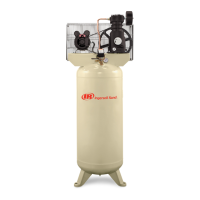
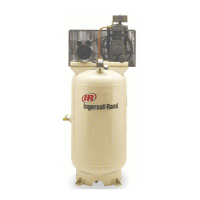

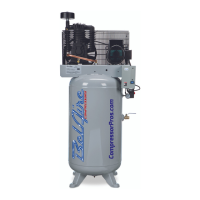
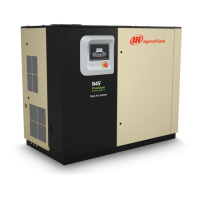


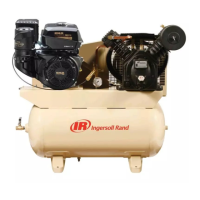
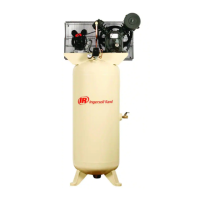
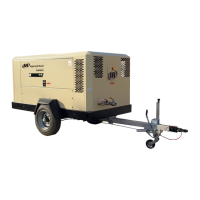
